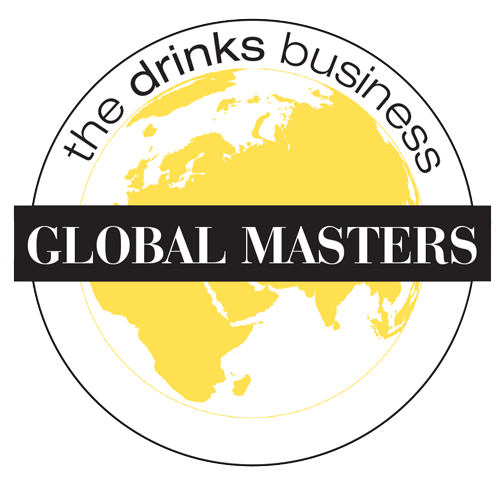Asian Sauvignon Blanc and Riesling Masters 2017: the results
Riesling

William Chan, general manager of Cuisine Cuisine (left), and Peter Nicholas, winemaker and WSET wine educator (right)
Compared with Sauvignon Blanc, Riesling has earned a reputation for its longevity, and its ability to transmit terroir without losing its varietal typicity, whether planted on the steep sites of the Mosel, Austria, Alsace or Australia.
Out of 45 samples judged, 43 went home with a medal, of which two were given the grand accolade of Master and seven were awarded Gold medals, a testament to the grape variety’s quality in every price band.
It is a wine variety that German winemakers have mastered and perfected over the years from bone dry, steely versions to botrytis-affected Trockenbeerenauslese (TBA). Judging by the entries of the competition, there were 16 samples from Germany, with two sweet versions winning Gold medals, both from Germany’s leading producer Dr Loosen; a classic Graacher Himmelreich Riesling Qualitätswein trocken GG 2015 and Dr Loosen Wehlener Sonnenuhr Riesling Kabinett 2016.
However, this time at the competition, it was Austria that outperformed its more famed neighbour in the Riesling category, bringing home two Gold medals and a Master title.
About the venue: Cuisine Cuisine
The award-winning Cantonese restaurant, Cuisine Cuisine, in the heart of Tsim Sha Tsui area is set in a swanky backdrop decorated with traditional Chinese motifs that evoke a sense of reverie and awe. The cuisine served is classic Cantonese with a modern twist. Its sautéed Australian Wagyu beef stir fried with matsutake mushrooms and Japanese chili pepper is succulent and tender. Its braised tofu and bamboo piths with morel mushrooms packs plenty of flavour with layers of textures. Another must order is the steamed wild mushroom and black truffle dumplings. Served in three pieces, the dumplings are fragrant and refined. Address: 3/F, The Miral Hong Kong, Mira Place, 118-130 Nathan Road, Tsim Sha Tsui.
The most prized Austrian Rieslings are dry, full-bodied, concentrated and aromatic with Wachau being the best-known region internationally. But neighbouring sites in Kamptal and Kremptel are also producing clean, pure expressions of the grape, as affirmed by the Master-winning Weingut Nigl Riesling Kremstal DAC Reserve Privat Senftenberger Pellingen 1ÖTW 2015.
Two dry Rieslings from Kamptal’s Bründlmayer winery – Weingut Bründlmayer Riesling Kamptal Terrassen and Weingut Bründlmayer Riesling Heiligenstein Alte Reben – also won Gold medals.
Moving on to the New World, Australia proved to be the biggest winner, producing age-worthy dry Rieslings with an underlying, racy minerality and pronounced fruit, though less alcoholic and phenolic compared to samples from Alsace or Austria.
Its best known sites in Clare Valley, Eden Valley and other cooler sites in Tasmania are producing wines with impressive longevity. St. Andrew’s Riesling from Clare Valley, an unoaked dry Riesling in the HK$200-HK$299 (US$25.6 -US$38.3) price bracket, impressed the judges with its zesty citrus aromas, its harmonious balance of acidity, alcohol and fruitiness. Two of McGuigan’s Shortlist Rieslings – the 2007 and 2009 vintages – won over the judges with their purity of fruit and sell for less than HK$199 (US$25.5) a bottle.
Residual sugar
Overall, dry Rieslings shone through in this competition although sweet versions including the three Gold-medal winning wines – two from Dr Loosen one from Washington State’s St. Michelle winery – stood out from the crowd, impressing the judges with their balance between sweetness and acidity.
“The New World and Old World Rieslings are still showing a good depth of acidity. There was more residual sugar found in the Old World selections, while the New World samples tended to be drier”, stated William Chan based on the samples at the competition.
There were two examples of Riesling where the residual sugar might have been mislabelled or at least entered in the wrong bracket, as a couple of judges noted, a problem that underlines the point that residual sugar level in Rieslings can be even more confusing for consumers.

Tersina Shieh, wine consultant (left), and Sarah Wong, freelance wine writer (right) sharing a laugh during judging
“If you are a consumer who doesn’t know much about Riesling or a style you like, when you look over a shelf, you will have no idea what to buy, what style you are going to get,” said Stockman.
“Some producers do put a scale of sweetness on the back label. I am encouraging supermarkets such as Park ‘N’ Shop to put stickers to indicate sweetness. That will help”.
This is also echoed by Lee, who added that, compared with Sauvignon Blanc, Riesling is not a volume driver in the on-trade either, due to many consumers’ unfortunate perception that all Rieslings are sweet.
“A person who drinks wine may only like certain grapes and looks upon Riesling with horror as they perceive it to be a sweet grape – I think they were probably traumatised by a bottle of Blue Nun or Black Tower, both of which have a fair amount of residual sugars that can be quite cloying,” she explained.
